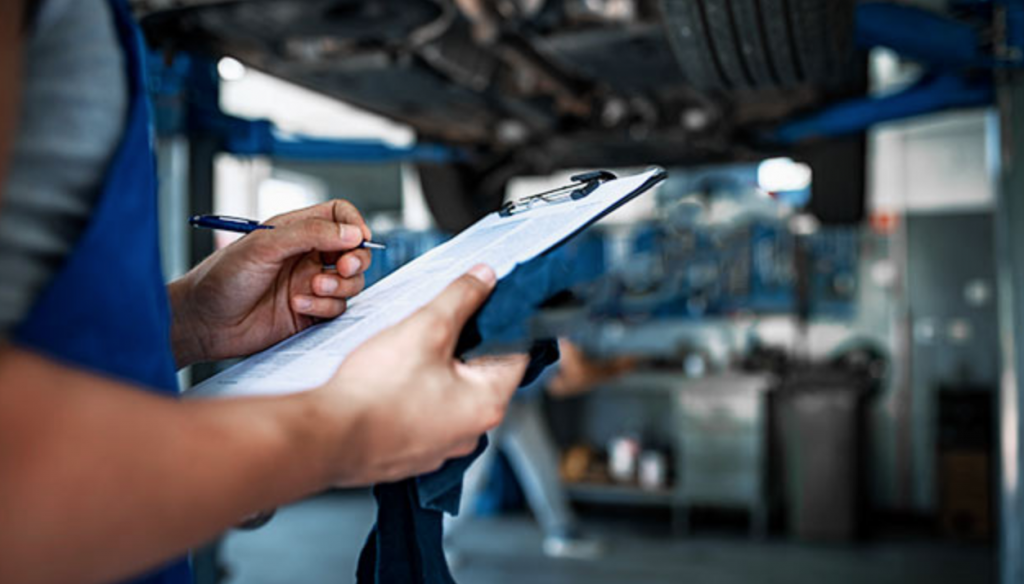The radiator is one of those parts we don’t think about too much. The engine, lights, and tires are the parts that can have the most dramatic problems, right?
However, if something does go wrong with your vehicle’s radiator, it typically goes very wrong. With your car’s cooling system made up of the water pump, thermostat and the radiator, if there’s a problem, your scorching engine will make your vehicle overheat spectacularly without anything to cool it down. This heat can wreak havoc on the other components in your vehicle! So, it’s important to be aware of what can go wrong with your radiator and cooling system, and be able to recognise the signs of a problem.
Your vehicle constantly overheats
One of the most common signs that your radiator is failing is a vehicle that overheats all the time, even under standard driving conditions. Your radiator is the key to keeping your engine cool. So if it’s malfunctioning in any way, it’s not surprising that overheating is your vehicle’s first symptom.
If your vehicle overheats, contact us to take a look or book it in for a service.
Your vehicle overheats while idle
One crucial part of your vehicle’s coolant system is the radiator fan. This electric fan draws air into your radiator to keep it cool when driving at a low speed or idling. If this fan breaks down, overheating while idle is the typical effect.
Sludge has built up in your radiator
Take a look at the coolant in your radiator. A healthy coolant is a red, green, or bright yellow colour. If your coolant turns an oily or rusty color, contaminants have built up in your radiator. These contaminants can have a significant negative impact on your radiator’s performance. If your coolant looks like this, book in your vehicle with a mechanic right away!
You could just replace the coolant to deal with the gunk. The new coolant will guard against the dirt problem worsening in the short term. But what you really need to do is flush the entire coolant system. This will remove all coolant gel, get rid of all the sludge and prevent the formulation of new mineral deposits.
You have low coolant levels
Do you feel like you’re forever topping up your radiator’s coolant? Is your “low coolant” light always turning on? Or do you discover a red, green, or bright yellow puddle under your vehicle every time you drive off? If you spot any one of these signs, your vehicle’s coolant is leaking.
This problem may not be down to the radiator itself, but a hose or problem in the engine block are the culprits. If this is so, you probably have a leak on your hands. The most common leak is a leaky hose. But the radiator itself can leak.
Why do leaks happen? Every time you use your vehicle, coolant runs back and forth from your piping hot engine to your radiator. This results in a lot of pressure, resulting in damage to your radiator hoses.
If your hoses don’t just degrade, they’ll come loose, causing coolant to escape and the radiator overheating.
If you spot fluid under your vehicle or catch a whiff of that sweet coolant scent, bring your vehicle to a mechanic like us to diagnose the problem.
Your radiator is rusty
If your vehicle’s exterior becomes rusty, it’s easy to notice. You’ll smell that characteristic scent of decay, with bright orange stains appearing on your hands or clothes when you carry out maintenance. But what about when the rust is inside your radiator? One of the first signs of rust in your radiator is your vehicle running too hot or overheating. You should also be able to spot those coppery rust patches on the outside of your vehicle’s radiator. As well as this, your coolant may turn a brownish colour.
When you think about it, your radiator is a metal object full of liquid; both key ingredients for rust to occur. So it’s no surprise that rust happens. But with severe rusting causing leaks, widespread malfunction, or even holes through your radiator, it’s essential to keep an eye out for it. You should also be more vigilant about rust when it’s cooler out, or you live in a colder area.
A poorly functioning thermostat or pump
Your vehicle’s radiator is just one part of its interconnected coolant system. Every individual piece of this system needs to work correctly to keep your engine cool. If your thermostat stops working, the system won’t know when to release fluid into the radiator. Or, if your water pump crashes, your system won’t have the pressure it needs to circulate coolant. So you can see how both of these things can have a knock-on effect on your radiator.

